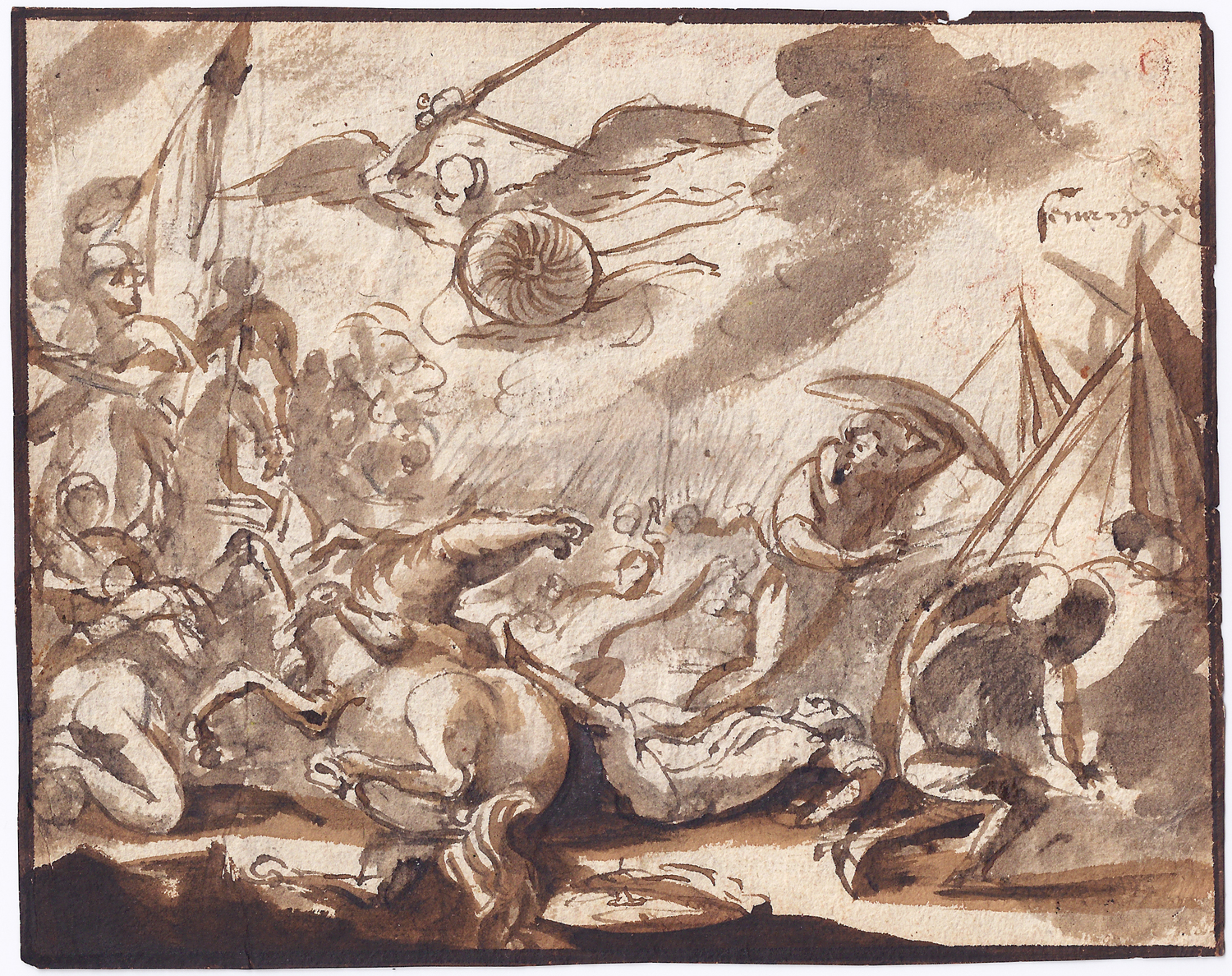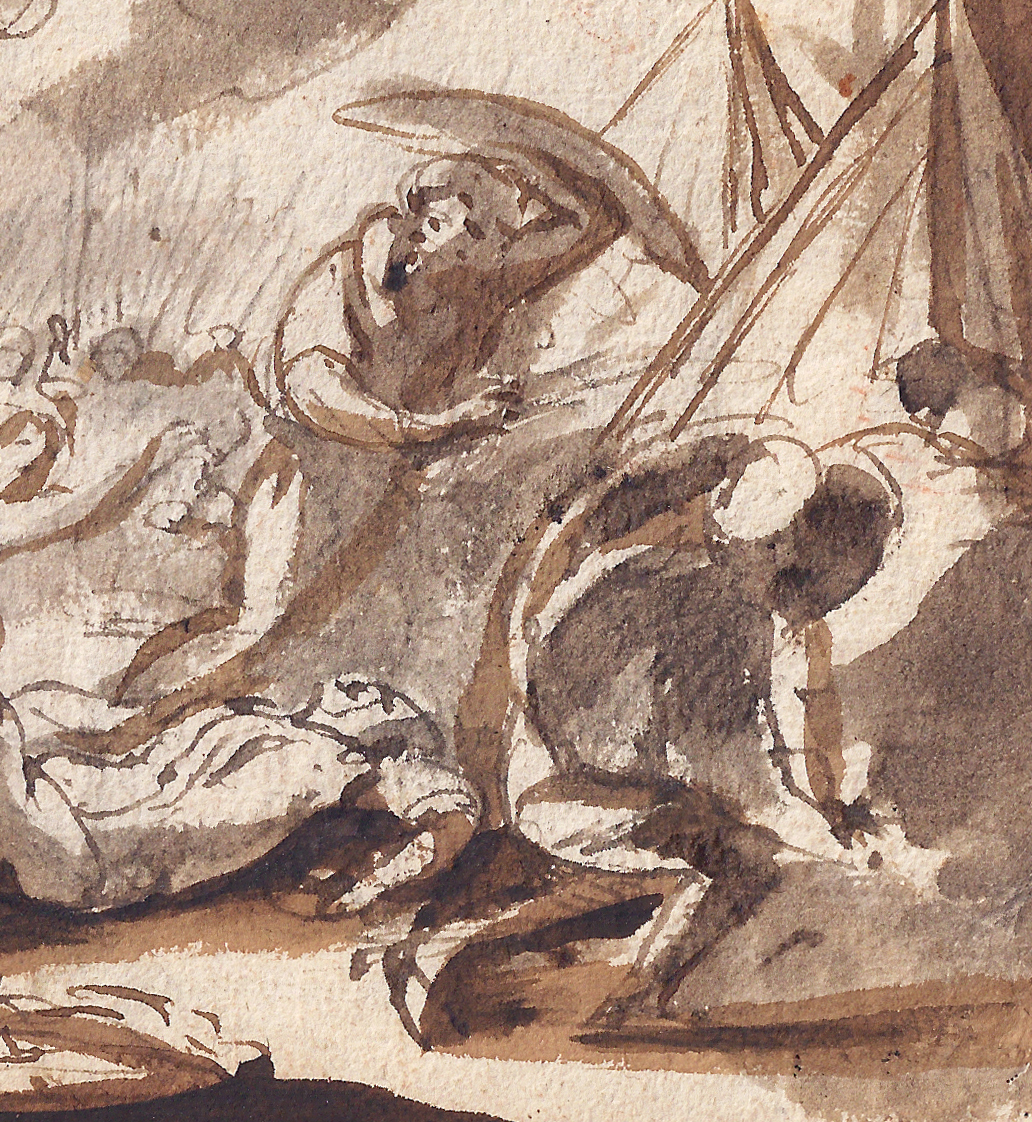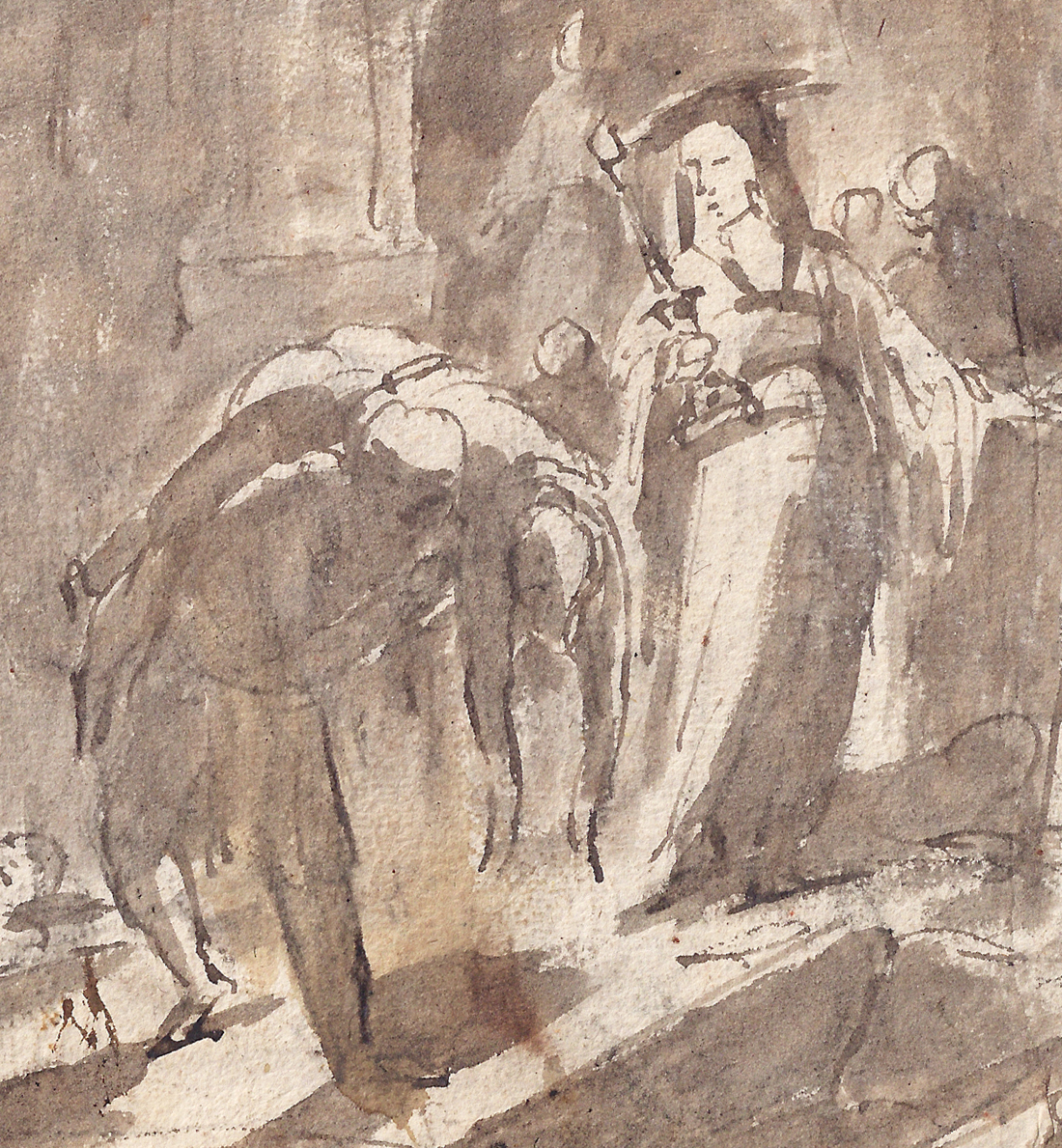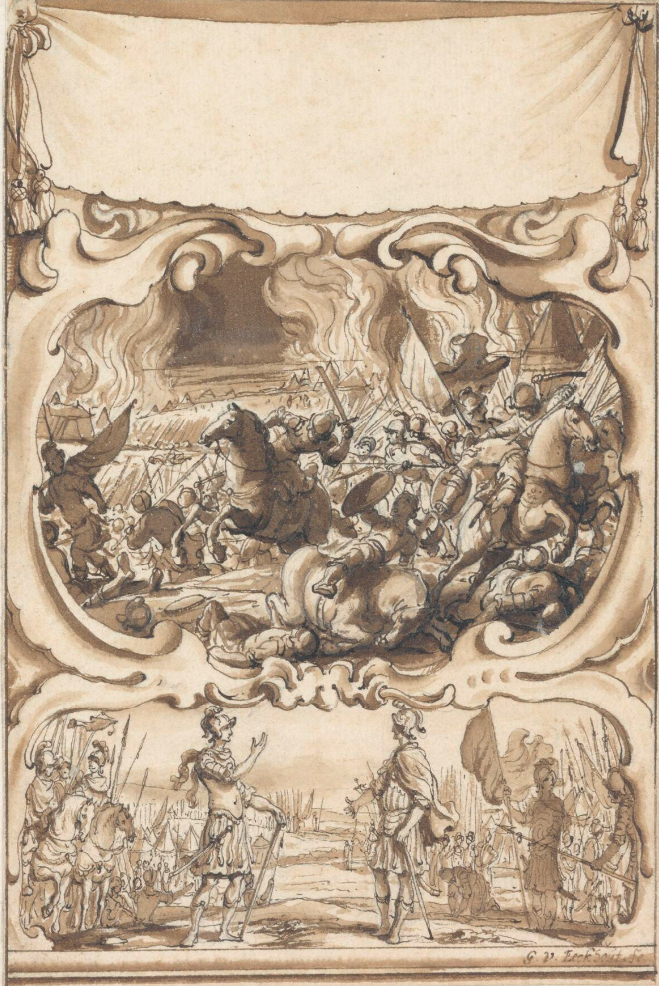GERBRAND VAN DEN EECKHOUT (Amsterdam 1621 – 1674 Amsterdam)
Gerbrand van den Eeckhout (Amsterdam 1621 – 1674 Amsterdam)
The Defeat of Sennacherib (recto); Tobit Burying the Dead (verso)
Traces of black and red chalk, pen and brown ink, brown and grey wash, brown ink framing lines, 149 x 187 mm (5.9 x 7.4 inch)
Annotated, presumably by Eeckhout, ‘Sennacherib’ (recto, upper right) and ‘tobias de / doode begraeft’ (verso, upper left)
Provenance
Private collection, Belgium
***
Gerbrand van den Eeckhout was the son of the goldsmith Jan Pietersz van den Eeckhout (1584–1652).1 Between 1635 and 1640 Gerbrand apprenticed in Rembrandt’s studio, and he remained close with his former teacher in later life. Van den Eeckhout was a versatile artist who produced history paintings and portraits, landscapes, genre scenes and figural works. He also executed designs for ornamental engravings and goldsmith work. Besides assimilating the style of Rembrandt, he was influenced by Gerard ter Borch II and Pieter de Hooch. He was also held in high regard as a connoisseur and a valuer of art; he counted numerous scholars and poets among his acquaintance.
Eeckhout’s great knowledge of the bible and historical sources may have inspired him to draw this rarely depicted subject.2 Sennacherib, King of the Assyrians, laid siege to Jerusalem in 701 BC, but his army was struck down by heavenly force in the form of an angel (2 Kings 19:35). The subject is best known from Rubens’s painting of c. 1616 in the Alte Pinakothek, Munich. The subject on the verso is also very rare in the visual arts, one of the few representations is by Maarten van Heemskerck in a drawing formerly at Christie’s.3
This recently discovered drawing is an interesting addition to Eeckhout’s drawn oeuvre. The attribution was confirmed both by Drs Peter Schatborn and Dr Holm Bevers.4 Schatborn and Bevers pointed out that the present sheet can for instance be compared to Eeckhout’s design for the title page of Polybius's Historiën in the Fondation Custodia, Paris (fig.).5 They compared the strong washes applied in the drawing on the verso to a series of drawings by Eeckhout in the Louvre.6
SOLD
1. For Eeckhout as a draftsman, see W. Sumowski, 'Gerbrand van den Eeckhout als Zeichner', Oud Holland, 77 (1962), pp. 11-39 and H. Bevers, 'Early, Rembrandtesque drawings by Gerbrand van den Eeckhout', Master Drawings, 48 (2010), pp. 39-72.
2. I am grateful to Prof. Hans Vlieghe for his help in identifying the subject, email correspondence 2 March 2014.
3. Christie’s, Amsterdam, 25 November 1992, lot 506, repr.
4. Email correspondence 8 March 2014.
5. W. Sumowski, Drawings of the Rembrandt School, New York 1980, vol. 3, pp. 1444-45, no. 667, repr. and P. Schatborn, Rembrandt and his Circle: drawings from the Frits Lugt Collection, Paris 2011, cat. no. 75.
6. Sumowski nos. 653–661.




